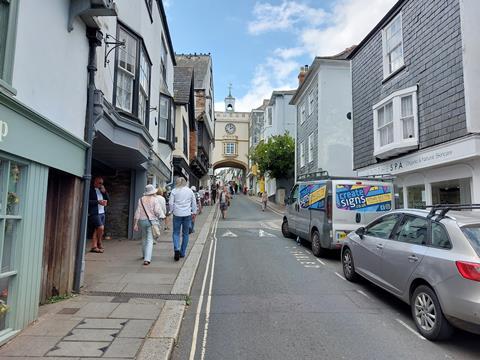We can create thriving new high streets, but it requires curation and a different financial model, writes David Rudlin.

Every masterplan for a new settlement will include a high street. The lovingly rendered illustrations will show mothers with push chairs strolling past local shops, artisan bakers, cafes and maybe even a pub. And yet these streets are almost never built.
Over the last few months we have been editing Tales of the High Street a project that seeks to tell the story of a hundred high streets. In my next few columns I will be sharing some of these stories, and I thought a good place to start was the new settlement of Cambourne.
The masterplan for Cambourne was drawn up by Terry Farrell in the mid 1990s. It shows three villages, Lower, Upper and Great Cambourne to be built around village greens and strung together with a high street culminating in a thriving village centre. This is not how it has turned out.
Cambourne is largely complete with 6,600 homes and 10,000 people. Yet the high street is lined with carefully mown grass where the shops should be. There is one commercial block with a few shops, a café and even a pub, however the real shopping is done at an enormous Morrisons just to the north of the high street that never was.
The shops, so it is supposed, will not be viable until the settlement is largely complete
So Cambourne’s population of 10,000 supports just 25 shops. Compare this to two of our other ‘tales’; Ludlow, with a similar population, has 253 shops (including 20 pubs) or Totnes with a smaller population and 276 shops. This despite the fact that the average household income in Cambourne is twice the figure in Ludlow and Totnes. Cambourne’s households generate half a billion pounds of spending power a year but not enough to build a high street.
There are three reasons for this.
The first is phasing; in the early stages the population is small. The shops, so it is supposed, will not be viable until the settlement is largely complete, by which time households will have got used to shopping and socialising elsewhere, probably by car.
The second is the commercial model for new development. In Ludlow and Totnes the shops were built over many years, the capital costs have long been paid-off and property costs are low.
By contrast a new high street must cover the costs of the land and construction and still produce a return in 10 years. Independent shops will be unable to fund the fit-out of shell units or provide the covenants required by investors. Lettings will therefore be confined to a small pool of the usual suspects; one of the coffee chains, a metro supermarket, possibly a chemist or bookmaker.
There is a place that has overcome these problems
The third problem is the way that catchment populations are calculated. While the populations of Cambourne, Totnes and Ludlow are similar, their catchment populations, as calculated by Experian, vary hugely. Cambourne’s is just 4,000 compared to 20,000 in Ludlow and 60,000 in Totnes.
While it is true, the established towns serve a wider area, catchment population is a slightly artificial number – Cambourne’s doesn’t even include the whole of its own population. Nevertheless, it is important because the catchment population is one of the figures that retail developers and tenants base their investment decisions on.
There is a place that has overcome these problems. The new settlement of Nansleden in Newquay developed by the Dutchy of Cornwall may have only completed a few hundred homes, but it already has a high street with 3 cafes, a florist, wedding shop, bakery, farm shop, deli, yoga studio, wine shop and even a pet shop. How has this been done?
The trick has been to treat the shops as a non-commercial element like the roads and the schools. Build the shops in advance of demand, fit them out with a shop front and services so they are ready to use and let them below market rent on short leases to hand-picked independent businesses.
The problem lies not with the designer but the financial model
This is not as hopelessly uncommercial as it sounds. The shop units are built below flats which share the construction costs, and the businesses do pay rent which will increase over time as the settlement grows. What’s more, the existence of a thriving high street does wonders for the value of the new homes.
This is not what happened in Cambourne. There have been attempts to attract a developer to build the town centre, the most successful of which resulted in a solitary row of shops and was only viable because it was cross subsidised by the big box units. These of course undermined the prospect of the rest of the high street ever being built.
As with many of the issues I have discussed in this column, the problem lies not with the designer but the financial model. Until this changes, those lovingly rendered high street illustrations will remain a fantasy and we will continue building car dependent new settlements.

Postscript
David Rudlin is principal and a director of URBED (Urbanism Environment and Design), a former chair of the Academy of Urbanism and an honorary professor at Manchester University
















No comments yet